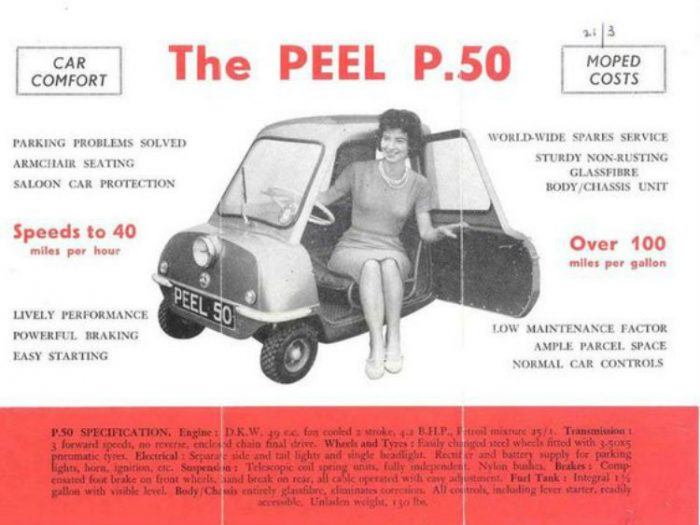From Very Small To Extra Large: How History Impacts Car Preferences

Looking Back At The Tiny Car Era
Microcars, those automobiles with engines under 1,000cc and holding no more than two people, occasionally re-enter the public?s view. While usually considered curiosities, they have a fascinating history, and were very popular for a time. Car enthusiasts will not soon forget the Peel P50, the world?s smallest car that ceased production in 1965. While only fifty original Peel P50s were made, this style of vehicle has historical significance and is a dramatic contrast to anything we see on streets today.
The Peel?s small production numbers, however, make it an outlier. Many microcars sold in the tens and hundreds of thousands. Before we go further, let?s take a step back and compare the evolution of cars and driving in the United States vs. Europe. 1960s-era advertisement for the Peel P50.
Wide Open Spaces
The U.S. is a large and young country compared to European ones. Our cities and towns are spread far apart. As cars were introduced into commerce, the dirt horse paths did not suffice as motor roadways. These paths were eventually paved, and since land was aplenty, they were also made wide. Gasoline was plentiful and cheap. As people spent more time in their cars, they wanted room for comfort. All these factors conspired to result in the large American motor car.
The birth of the interstate highway system in 1956 and advent of more drivable roads only fueled the desire for Americans to take road trips in their new stylish rides. But for car ...
| -------------------------------- |
|
|


